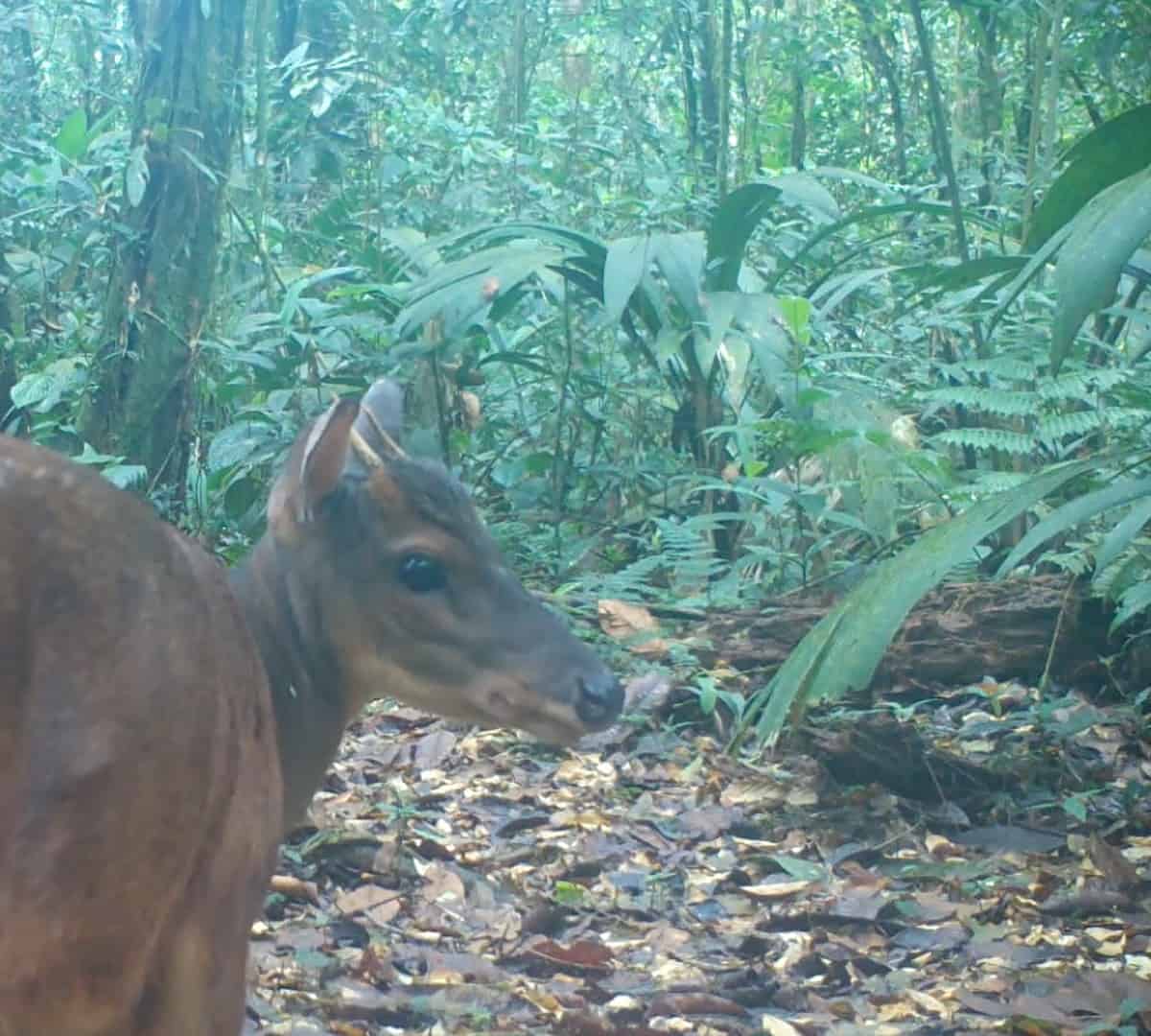Costa Rica is home to two species of deer. We’ve already met the white-tailed deer. Now let’s take some time to learn about the other, lesser-known species, the red brocket deer.
The red brocket deer is one of a handful of brocket deer species found in the Americas, but the only one found in Costa Rica. You’d expect its Spanish name to be something like venado rojo but somebody threw a monkey wrench into the naming system and cabro de monte popped out. Cabro de monte translates to something like mountain goat, goat of the mountain or wild goat, all of which are inaccurate. It’s not a goat, but it is approximately goat-sized and has goat-like horns, so I get it.
Since we’re all more familiar with the white-tailed deer, it may be helpful to explain the red brocket deer in comparison. White-tailed deer, averaging about 51 inches tall and 65 pounds, are larger than red brocket deer which come in at about 43 inches and 55 pounds. White-tails are a light tan, while red brocket deer are generally a darker brown, even reddish-brown.
White-tailed deer live in more open habitats while red brocket deer prefer thicker bush. Finally, white-tails have large, branching antlers and red brocket deer have short, backward-facing, spiked antlers.
Interestingly enough, where these two species of deer live and what their antlers look like are related. The white-tailed deer lives in open habitats where it walks around with its head held high, generally not getting those impressive antlers caught in the underbrush. The red brocket deer on the other hand lives in thick jungle complete with dense vegetation and tangled vines. If it took its cues from the white-tailed deer, it would walk about ten meters and get its antlers stuck.
Instead, the red brocket deer walks with its head held low, keeping its branchless, backward facing antlers out of the tangles of vegetation. Their smaller size and darker color also match their dark, tight quartered habitat. Their smaller size allows them to slip through the undergrowth, and their dark color enables them to blend into an environment where the sun is mostly blocked by the overstory.
Since red brocket deer live in thick tropical forests, they eat what that type of environment provides. In these dense tree-filled habitats, one will come across many fruits and seeds. While the monkeys high above get their choice of the best fruits, the brocket deer down belong get what the monkeys drop or don’t want.
So their diet consists of a lot of fruits and seeds with hard casings or toxins because those are the ones that the monkeys toss aside. It is believed that red brocket deer can deal with this less-than-ideal diet by way of fermentation. Rather than smashing through hard seed-shells with powerful jaws, like peccaries, red brocket deer dissolve their food through gut-fermentation.
Though I have never had the good fortune of seeing a red brocket deer in the forest with my own eyes, I have seen the video-results of them stealthily passing by my camera trap lenses.
The only place I’ve recorded the cabro de monte has been on the opposite side of the country from where I spend most of my time. In Limón. I recorded several videos of them, mostly at night, on farms bordering Braulio Carrillo National Park and Barbilla National Park. I’m happy to share a few of those clips with you in the video below.
About The Author
Vincent Losasso, founder of Guanacaste Wildlife Monitoring, is a biologist who works with camera traps throughout Costa Rica. Learn more about his projects at: Instagram and facebook or by email.






